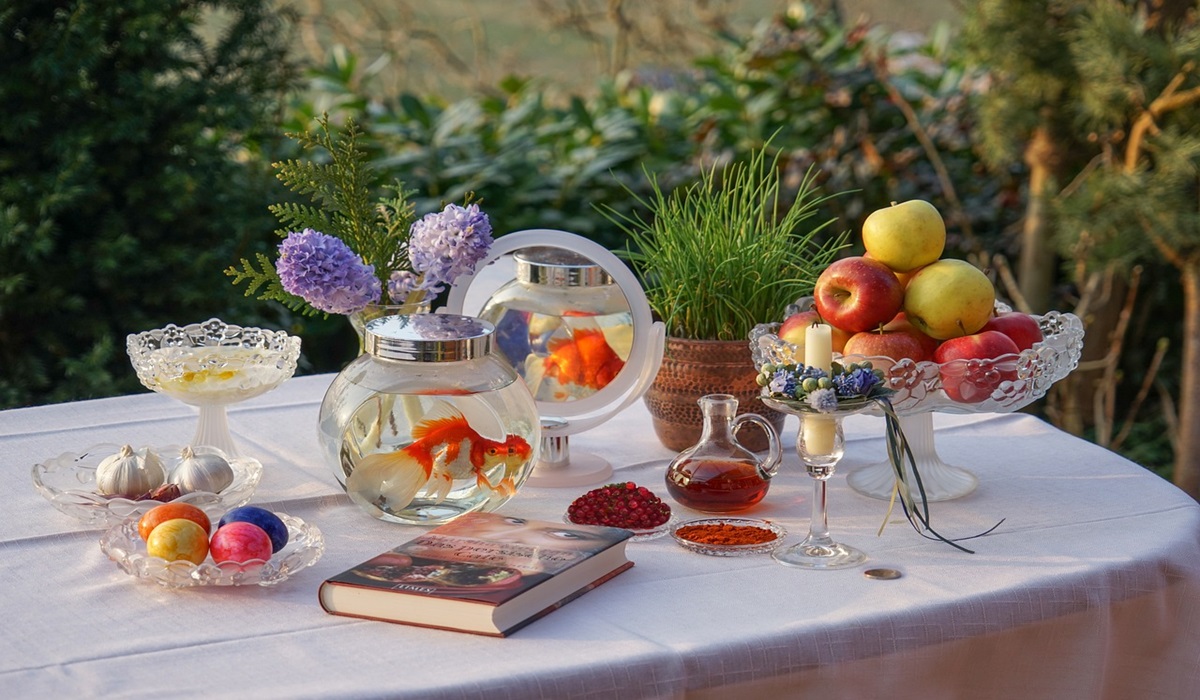Embracing Tradition: The Haft-Sin Table for Nowruz (Persian New Year)
- Ingrid Jones
- Middle East
- Trending
- March 20, 2024

Image Credit, Katzenfee50
As the world prepares to bid farewell to winter and embrace the vibrant hues of spring, Persian communities worldwide eagerly anticipate the arrival of Nowruz, the Persian New Year. At the heart of Nowruz celebrations lies the cherished tradition of the Haft-Sin table—a symbolic display that embodies the essence of renewal, prosperity, and cultural heritage.
A Tapestry of Symbolism:
The Haft-Sin table, adorned with an array of meticulously selected items, serves as a visual ode to the values and aspirations woven into the fabric of Persian culture. Haft-Sin, meaning “seven S’s” in Persian, refers to the seven symbolic items arranged on the table, each representing blessings for the coming year.
Unveiling the Treasures:
Sabzeh (Sprouted Wheat or Lentil): Symbolizing rebirth and growth, sabzeh represents the renewal of life that accompanies the arrival of spring. Wheat or lentil seeds are sprouted in a dish or tray, reminiscent of the verdant fields that blanket the earth during this season of abundance.
Samanu (Sweet Pudding): Made from wheat germ and symbolizing affluence and fertility, samanu embodies the promise of prosperity and sweetness in the days to come. Its rich, velvety texture evokes the richness of life’s blessings.
Senjed (Dried Fruit of the Lotus Tree): Senjed, or the dried fruit of the lotus tree, represents love and affection. Its presence on the Haft-Sin table signifies the importance of nurturing relationships and fostering harmony within families and communities.
Seer (Garlic): With its pungent aroma and potent flavor, seer wards off negative energies and evil spirits, ensuring protection and well-being in the new year. It serves as a reminder to cultivate strength and resilience in the face of adversity.
Seeb (Apple): Symbolizing beauty and health, the apple embodies vitality and renewal. Its crisp, juicy flesh evokes the freshness of spring and the promise of rejuvenation after the dormant winter months.
Somaq (Sumac): With its vibrant crimson hue, somaq represents the sunrise and the dawn of a new day. Its tart flavor serves as a reminder of life’s complexities, urging us to embrace both the sour and the sweet with grace and fortitude.
Serkeh (Vinegar): Serkeh, or vinegar, symbolizes patience and wisdom gained through life’s experiences. Just as vinegar mellows and matures over time, so too do we grow wiser and more resilient with each passing year.
Beyond the Seven S’s:
In addition to the Haft-Sin items, the table may also include other symbolic elements such as a mirror (reflecting the past and the future), candles (symbolizing enlightenment and happiness), and decorated eggs (representing fertility and new life). Fresh flowers, particularly hyacinths, tulips, and narcissus, add a touch of natural beauty and fragrance to the tableau, infusing the space with the essence of springtime.
A Time for Unity and Celebration:
As families come together to arrange their Haft-Sin tables and usher in the new year, the air is filled with a sense of anticipation and joy. It’s a time to honor cherished traditions, strengthen familial bonds, and embrace the spirit of optimism and renewal. Whether in bustling metropolises or quaint villages, the Haft-Sin table serves as a timeless symbol of cultural heritage and resilience, transcending boundaries and uniting hearts across the globe.
As Nowruz dawns and the Haft-Sin tables glisten with their array of symbolic treasures, let us embrace the traditions of the past while looking towards the future with hope and optimism. May this new year be filled with blessings, abundance, and boundless joy for all who celebrate.
“Eid-eh Shoma Mobarak!” (Happy New Year!)








